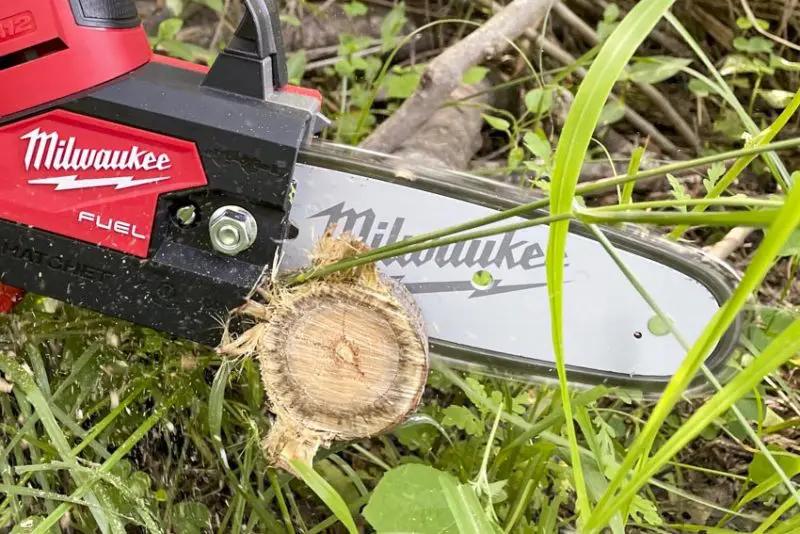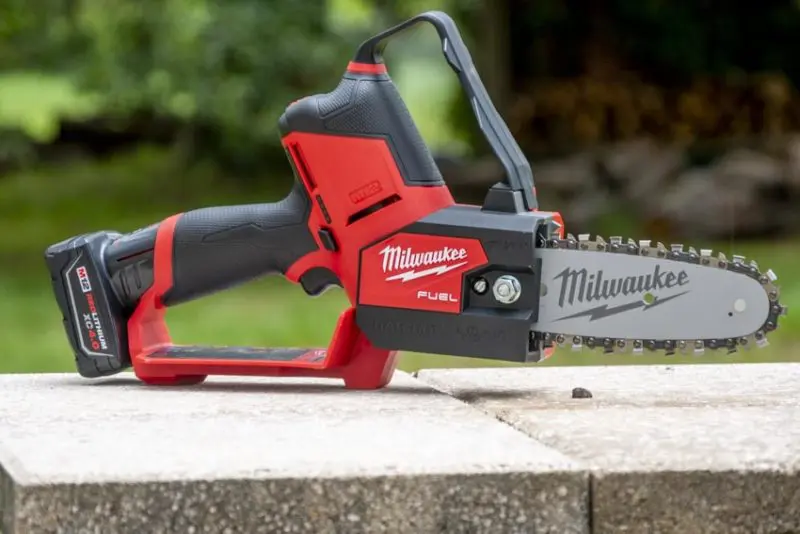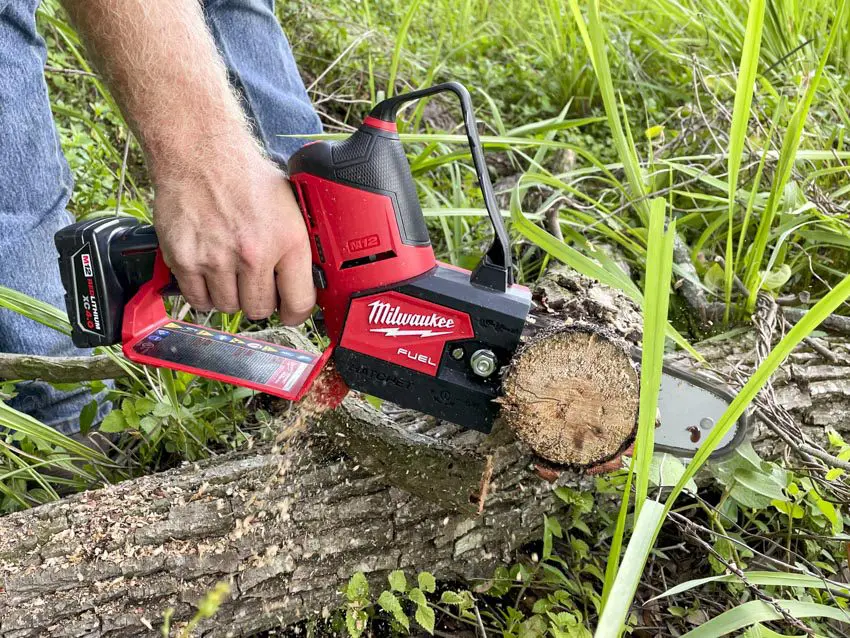Milwaukee M12 Hatchet Pruning Saw Take Mini Chainsaws To A New Level
You could use a chainsaw to deal with your garden pruning needs when a hedge trimmer can’t cut it, but why do you need such a big tool for small branches? The Milwaukee M12 Fuel Hatchet Pruning Saw joins a growing group of garden pruners— also known as mini chainsaws—that aim to get the job done with less hassle.
Milwaukee M12 Fuel Hatchet Performance
Pruning saws such as the Milwaukee M12 Fuel Hatchet step in to cut branches up to 3 inches or so. These are much larger than hedge trimmers can handle and almost frustratingly small for your 16-inch chainsaw.

In Milwaukee’s case, they start with a brushless motor and pair it with a 6-inch Oregon bar and chain. Despite the smaller form factor, the Hatchet uses a full-house chain with a cutter on every link instead of a skip-tooth design that makes it easier on the motor at the cost of cutting speed.
When it comes time to replace the chain, look for a 6-inch, 28-link, 3/8-inch pitch, 0.43 gauge replacement.

There’s a variable speed trigger to control your cutting speed up to 984 fpm. Practically, it’s not only much faster than a hand saw, but it’s also much less fatiguing.
If you’re used to gas saws for pruning and light limbing, one nice trait of switching to battery power is that the chain spins up right away. You don’t have that slight delay of the engine as fuel makes its way through.
Runtime
For runtime, Milwaukee tells us that you can make up to 120 cuts in 2-inch oak on a single charge of the 4.0Ah battery that comes in the kit. Paired with a hedge trimmer for branches up to 3/4-inch, a chainsaw for branches over 3 inches, and the Milwaukee M12 Fuel Hatchet for everything in between, one battery is plenty to get through a full day of landscaping.
What About Using a Reciprocating Saw?
We’re advocates of pairing a reciprocating saw with a pruning blade for this kind of work, especially when you use a one-hand model such as the Milwaukee M18 Fuel Hackzall. However, there are some advantages of switching to Milwaukee’s mini chainsaw instead.
First, it’s purpose-built for the job of pruning. One-hand reciprocating saws do their best work on thin wall pipes and other thin materials. The pruning saw is specifically designed to cut thicker and harder woods than we prefer taking a one-hand reciprocating saw to and it’s much lighter and more compact than a full-size model. Plus, the Hatchet makes it through cuts faster.
Then there’s the action of each saw. Reciprocating saws have much more vibration than chainsaws, and the Hatchet is a far more comfortable tool to use for pruning.
There’s nothing wrong with using a reciprocating saw for pruning, but we have a much better overall experience when we bring the Milwaukee M12 Fuel Hatchet to the job.
Milwaukee M12 Fuel Hatchet Design Notes
Foundations
A quick look at the Hatchet’s design reveals a foundation very similar to the M12 Fuel Hackzall. From there, it swaps a blade clamp for a 6-inch bar and chain and adds a handguard on the front. In addition to offering protection against the top of the chain, it also encourages two-hand use.
There’s also a lower guard under the trigger.

Size and Weight
Including the bar and chain, the tool is 18.5 inches long. Clearly, that’s more compact than standard chainsaws or reciprocating saws and much easier to maneuver around branches you want to keep.
The weight is also significantly better than other power tools you might turn to. With a 4.0Ah battery, it’s just 4.85 pounds.
Bucking Spikes
Bucking spikes are great for securing the saw against the branch to pivot through your cut in a stable, controlled fashion. On lighter-duty saws, we typically see plastic bucking spikes (if they’re present at all) and we wouldn’t have thought twice if Milwaukee used plastic. However, they stepped up and put a metal set on and we appreciate having a more durable component.
Chain Tensioning
Instead of using a tool-free chain tensioner, the Hatchet uses a single-stud design that requires a scrench. The upside is a more secure hold on the bar, so you spend less time re-tensioning over the course of the day. The scrench stores onboard, making any adjustments you need to make more convenient.
Given the choice between easier or more secure tensioning, we prefer greater security.

Automatic Oiler
One thing that sets Milwaukee’s mini chainsaw apart from the Stihl GTA 26 Garden Pruner is an automatic oiler. Manually oiling a chain every time you use the saw is annoying and it’s not as effective as automatically oiling more frequently. As we expect, the oil tank is translucent, making it easy to check your levels at a glance.

Milwaukee M12 Fuel Hatchet Pruning Saw Price
If you already have M12 batteries and want the bare tool, the Milwaukee 2527-20 is $179. Adding a 4.0Ah battery and charger, the 2527-21 kit is $249.
Milwaukee backs the tool with a 3-year warranty.
The Bottom Line
Mini chainsaws, cordless pruners, pruning saws, or whatever you’d like to call tools such as the Milwaukee M12 Fuel Hatchet don’t have a ton of competition at the moment. Among the ones available in the US, Milwaukee’s is a bit bulkier. However, its performance is higher and its design is more complete than its competition. Considering the overall landscape, this is the top cordless pruning saw on the market.
Milwaukee M12 Fuel Hatchet Pruning Saw Specs
- Model: Milwaukee 2527-21 (kit); 2527-20 (bare tool)
- Bare Size: 6 inches
- Chain: 0.043 in. x 3/8 in.
- Chain Speed: 984 fpm
- Oiler: Automatic
- Dimensions (LxHxW): 18.5 x 9.1 x 3.8 in.
- Weight: 4.85 lbs w/battery
- Warranty: 3-year limited
- Price: $249 (kit); $179 (bare tool)



